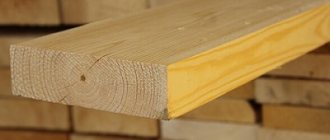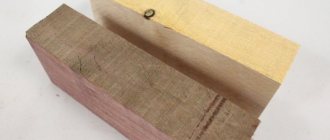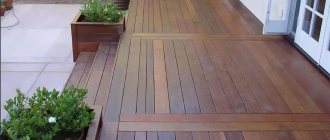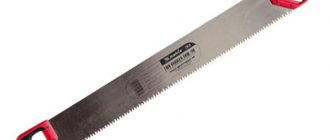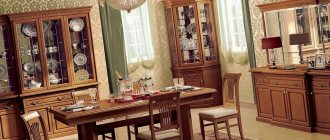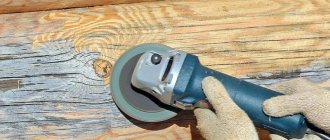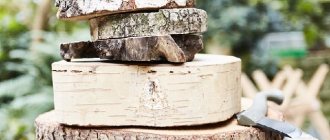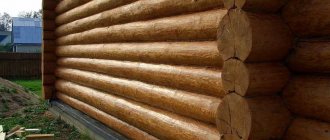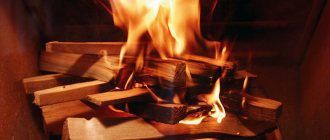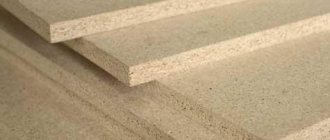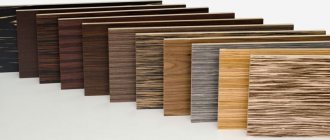The industry offers a large selection of composite materials and the most popular varieties are MDF, particleboard and fiberboard. Let's take a closer look at the main characteristics, physical and chemical properties, advantages and disadvantages of each of them. What all of these panels have in common is the filler - wood processed in different ways; the binders in them are also different. Accordingly, the slabs differ from each other significantly in their parameters.
MDF: description, main properties, advantages and disadvantages
This composite material is a wood fiber board produced using dry pressing technology. The formation of the MDF panel occurs under the influence of high temperatures and pressure; the binder is modified urea resins. The use of the latter makes it possible to minimize the emission of formaldehyde; the level of emissions of volatile substances is comparable to that of natural wood.
The abbreviated name of the material comes from the English abbreviation MDF, and is its transliteration. The letter M (Medium) indicates that wood-based panel materials of this type belong to the category of medium-density boards from 600 to 1000 kg/m3. High-quality MDF has advantages and disadvantages, which are determined by the properties of the filler and binder used.
The described plates have a number of undeniable advantages over analogues:
- The ability to produce MDF boards that are highly resistant to fire, water and biological pests.
- The thickness of the sheet varies from 2 to 60 mm, and it can be used to make a wide variety of products.
- Durable when used correctly.
- Possibility of forming products of complex configuration: furniture facades and other parts.
However, most types of MDF are not highly moisture resistant; the panels are not recommended for outdoor use. The outer surface of products made from this material may have a laminated coating and overheating should be avoided. This can lead to peeling of the film and loss of appearance.
MDF Wholesale
to order according to
your
sizes Read more
What is fiberboard?
Fibreboard is a fibreboard , or hardboard , which is obtained from pre-steamed wood dust using the wet hot pressing method. Fibreboard slabs most often have a small thickness, and one of its sides is usually covered with film.
Fiberboard is a wood-fiber board.
When discussing the advantages of fiberboard, one cannot fail to note its high durability and practicality at a fairly low cost. Fiberboards are made from wood fibers that have undergone a fine grinding procedure. The raw materials for fiberboard are wood chips, crushed wood and sawdust, that is, wood waste.
The fiberboard production technology comes down to grinding wood pulp and casting a slab from it. The fine-fiber wood substance is pressed and dried. The resulting boards have properties of increased security when used in conditions of high humidity. However, using fiberboard for direct contact with water is prohibited. This building material is environmentally friendly and has different textures, colors and reliefs.
Fiberboard can be processed with any tools - both a hand saw and an electric jigsaw. It should be remembered that before installation, the slabs must be adapted to the microclimate of the premises where installation will be carried out. This is due to the possible deformation of fiberboard in a humid environment. Therefore, before installation, to prevent the slab from moving, it is moistened from the back with water. The base frame for fastening fiberboard slabs is usually made in the form of lathing.
Fibreboard slabs are usually made of small thickness.
Wooden slats are used to mark the surface to be covered. The step between the slats is about 30 centimeters. They are secured with dowels or self-tapping screws. The plates are joined in the middle of the slats. To install fiberboard, wood self-tapping screws are used, the size is slightly smaller than the thickness of the frame.
Chipboard: characteristics, pros and cons
Chipboard is a material obtained by pressing with parallel heating of a mixture of shavings and sawdust with non-mineral binders. Chipboard is produced using special equipment that develops pressure from 0.2 to 5 MPa at temperatures from 120 to 190 °C. It is possible to introduce special additives into the composition of raw materials that determine the characteristics and properties of the material.
The designated particle board has pros and cons, but there are more advantages. This explains the constant increase in production and consumption of the material.
The most important advantages of chipboard include the following:
- High mechanical strength, the limit of which during bending is from 10 to 25 MPa and tensile strength is from 0.2 to 0.5 MPa.
- Uniformity, manufacturability and ease of processing. The material is easily cut with circular and band saws, sanded and milled.
- Possibility of using self-tapping screws, confirmats and nails to connect parts made of chipboard. The fasteners are firmly held in the material.
- There are moisture-resistant particle boards that are used in furniture production. This is an excellent material for making cabinets, shelves, tables and other interior items for bathrooms and kitchens.
One of the main disadvantages of chipboard is the release of formaldehyde resins, which are strong carcinogens. For this reason, some types cannot be used in the production of furniture; only high-quality boards of class E0.5 and E1 are used for this purpose. Conventional panels swell greatly when exposed to moisture, which leads to loss of appearance and rapid destruction.
Chipboard Chipboard always
in stock at the
best
prices Read more
Chipboard
Components
- Wood shavings, as the name suggests.
- Sawdust.
- Resin (mainly formaldehyde), which acts as a binder to hold individual fractions together.
Technology
The production of slabs occurs by pressing the initial mass at elevated temperatures.
Features of chipboard
Pros:
In terms of strength, these boards are superior to products under the abbreviation fiberboard. This is also due to the fact that they are produced in greater thickness (up to 5 cm), and therefore are able to withstand loads at which wood-fiber samples are deformed or broken.
Minuses:
- Insufficient density. Simply put, chipboard is a somewhat loose material.
- Increased hygroscopicity.
- Rigidity. Tightly fastening chipboard on an uneven base leads to the formation of cracks in the slab.
Examples of using
- Arrangement of a “dry” screed.
- Installation of decking.
- As a continuous sheathing.
- To strengthen the base, vertically oriented.
- Construction of canopies, partitions, fences, decking, chests, furniture (you can make a bed) and in a number of other cases.
Limitations in the use of chipboard
- In conditions of constant dampness or systematic changes in humidity, the service life of chipboard is sharply reduced.
- Should not be used for the construction of collapsible/prefabricated structures. Constant reinstallation of fasteners leads to the fact that the material on this segment literally begins to crumble, and self-tapping screws or self-tapping screws (if we are not talking about through drilling with fixation on a more solid base) no longer hold at this point.
Recommendation for selection:
The most reliable, durable and universally applicable chipboards are those with a three-layer structure.
Fiberboard: parameters, advantages and disadvantages
Fiberboard sheet material is made from a carpet of wood fibers through drying or hot pressing. To connect the filler, binders are used with or without the addition of additional components. Fiberboards are soft and hard, and are also divided into grades and classes according to their specific density. There are six types of soft panels and nine hard ones.
Inexpensive fibreboard, the pros and cons of which will be analyzed below, is used mainly for the manufacture of cabinet furniture parts. Fiberboard is usually used to make the back walls of cabinets and bedside tables, as well as the bottoms of drawers and trays of sofas, beds and armchairs.
The main advantages of this sheet material are as follows: Low price
Durability (if used correctly)
Environmental friendliness (Panels practically do not emit harmful substances into the environment)
Ease of processing
At the same time, fiberboard is not durable, the thickness of the sheet is small and it is impossible to make the side walls of furniture from it - the load-bearing capacity is insufficient. In addition, the material is unsuitable for wet rooms; when water gets on it, it deforms, swells and quickly collapses.
Fiberboard For any
construction purposes and furniture production with delivery to all regions
of Russia
Read more
MDF
This is a slab made from very fine sawdust. The difference between chipboard shavings and MDF shavings is like between products that have been put through a meat grinder and products that have been chopped with a mixer. Wood particles are held together by lignin and paraffin, so MDF is a very environmentally friendly material. MDF is rapidly gaining popularity in Europe (if the growth in chipboard production is 2%, then the growth in MDF production is as much as 25%).
Pros: MDF—as mentioned above—is an environmentally friendly material. MDF is quite soft and amenable to the finest processing, which is why it is the favorite facade material of modern designers. Carved kitchen cabinets, elegant headboards - all this MDF MDF has all the advantages of wood, but costs much less and lasts longer.
Minus: the only one is the unestablished production of MDF in Russia, which means the high price of the material. But we intend to give a decisive battle to this minus. United Panel Group will open MDF production in Russia in just six months.
Comparative analysis of fiberboard, chipboard and MDF, features of the use of materials
All the sheet materials described are composite and similar technologies are used for their production. The question arises: MDF and fiberboard panels, what is the difference between them, if both types of boards belong to the category of wood fiber boards. The differences lie in the production method and the composition of the filler and binder, which determine the main physical and mechanical characteristics of the panels.
Technologies and raw materials
Particle boards and other sheet composite materials are produced by hot pressing at high temperatures. For fiberboard and chipboard panels, the difference lies in the composition of the raw materials used; in addition, the former are often made by drying a carpet from wood fibers. The panels have different purposes and perfectly complement each other in furniture designs. The load-bearing elements are made from particle boards, and the back walls are made from wood fiber boards. This allows us to reduce the weight and price of products.
At the same time, the difference between MDF and chipboard is the level of emissions of harmful substances: phenols and formaldehydes. The first of these materials also has the best technical characteristics and decorative and protective properties. Chipboard, in comparison with MDF, is much cheaper and its use is more profitable in the mass production of budget furniture or other items.
Main characteristics of wood-based materials
For an objective assessment of MDF and chipboard, the main indicators of the panels should be compared. The named materials have different modulus of elasticity: for particle board, depending on the thickness, this indicator ranges from 1200 to 1950 MPa; for wood fiber panels - 1700 MPa. The latter material is more plastic and can be bent at a fairly large angle, while chipboard breaks under lateral loads.
The compared materials also differ in specific density. For MDF, this parameter ranges from 720 to 980 kg/m3. Chipboards come in three types with values less than 550 kg/m3 - low, more than 750 kg/m3 - high and in the range between the above values - medium.
A comparative analysis of the properties and characteristics of three types of board materials clearly shows the clear advantage of MDF; it is stronger and more durable than its competitors. Second place should be given to chipboard, the main advantage of which is its affordable price. Fiberboard closes the rating, but this material is practically irreplaceable in its narrow scope of application.
Composites based on natural raw materials are becoming increasingly widespread. Wood-based materials such as chipboard, fiberboard and MDF are widely used in a wide variety of industries: construction, furniture production, and the automotive industry. With the advent of modern technologies, it was possible to significantly (from 40 to 90%) increase the efficiency of using natural raw materials, including substandard ones.
Appearance
Quite large particles of wood are visually visible on the surface of untreated particle boards; in contrast, hardboard resembles thick cardboard. There is a significant difference in the thickness of the material:
- Chipboard can be produced in sheets of at least 10 mm thick, and the maximum value of this value reaches 50 mm;
- Fiberboard is much more “elegant” - from 2.5 to 7 mm.
To improve decorative properties, the surface of fiberboard and chipboard is often finished. But if hardboard is mainly painted as a finishing, and technological methods of caching and lamination are used less frequently, then chipboard enriched with melamine films is found everywhere.
Chipboard is furniture, laminate, countertops and even doors
The well-known floor covering, commonly known as laminate, is essentially a floor covering made from high-density chipboard and lined with acrylic or melamine resin.
In addition, veneering can be used to finish chipboard panels - gluing veneer (thin sheets of natural wood) onto the surface of the chipboard. It is veneered chipboard that is used in furniture production.
